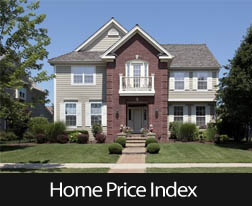Federal Reserve Raises Short-Term Interest Rates
 After prolonged speculation by economic analysts and news media, the Federal Open Market Committee of the Federal Reserve raised short-term interest rates for the first time in seven years. Committee members voted to raise the target federal funds rate to a range of 0.25 to 0.50 percent from a range of 0.00 to 0.25 percent to be effective December 17. The good news about the Fed’s decision is that the Central Bank had enough confidence in improving economic conditions to warrant its decision. But how will the Fed’s decision affect mortgage rates?
After prolonged speculation by economic analysts and news media, the Federal Open Market Committee of the Federal Reserve raised short-term interest rates for the first time in seven years. Committee members voted to raise the target federal funds rate to a range of 0.25 to 0.50 percent from a range of 0.00 to 0.25 percent to be effective December 17. The good news about the Fed’s decision is that the Central Bank had enough confidence in improving economic conditions to warrant its decision. But how will the Fed’s decision affect mortgage rates?
December’s FOMC statement cited improving job markets, increased consumer spending and declining unemployment as conditions supporting the Committee’s decision to raise the target federal funds rate. While inflation has not yet reached the Fed’s goal of two percent, FOMC members were confident that the economy would continue to expand at a moderate pace in spite of future rate increases. The FOMC said that the Central Bank’s monetary policy remained “accommodative.”
Little Impact Expected on Mortgage Rates after Fed Decision
The Fed’s decision to raise short-term rates likely won’t affect mortgage rates in a big way. The Washington Post quoted Doug Douglas, chief economist at Fannie Mae: “This one change, will in the larger scheme of things, will be unlikely to make a dramatic impact on what consumers will feel.”
Mortgage rates, which are connected to 10-year Treasury bonds, may not rise and could potentially fall. While the interest rate increase could increase yields on these bonds, analysts say that multiple factors impact 10-year Treasury bonds, so a rate increase is not set in stone for mortgage rates.
Rising Mortgage Rates Would Impact Affordability and Cost of Buying Homes
Higher mortgage rates could sideline some first-time and moderate income home buyers and would also increase the long-term cost of buying a home. Interest rates on vehicle loans and credit cards are more closely tied to the Fed rate and may rise according to current and future Fed rate hikes. Rising consumer interest rates indirectly impact housing markets as prospective home buyers face higher debt-to-income ratios caused by higher interest rates on car loans and credit card balances.
During a press conference following the Fed’s announcement, Fed Chair Janet Yellen emphasized that future rate increases would be “gradual.” Chair Yellen said that the Fed’s decision reflects the agency’s confidence in an economy that is on a path of “sustainable improvement.” When questioned about inflation rates, Chair Yellen said that the Fed will closely monitor both expected and actual changes in the inflation rate.

 U.S. home prices rose by 0.10 percent in July according to the S&P Case-Shiller Housing Market Index. San Francisco, California edged past Denver Colorado with a year-over-year price increase of 10.40 percent as compared to Denver’s reading of 10.30 percent. All year-over-readings for the 20-City Home Price Index posted gains, but Washington, D.C. showed the lowest year-over0-year growth rate at 1.70 percent. Chicago, Illinois and New York City followed closely with year-over-year readings of 1.80 percent and 1.90 percent respectively.
U.S. home prices rose by 0.10 percent in July according to the S&P Case-Shiller Housing Market Index. San Francisco, California edged past Denver Colorado with a year-over-year price increase of 10.40 percent as compared to Denver’s reading of 10.30 percent. All year-over-readings for the 20-City Home Price Index posted gains, but Washington, D.C. showed the lowest year-over0-year growth rate at 1.70 percent. Chicago, Illinois and New York City followed closely with year-over-year readings of 1.80 percent and 1.90 percent respectively.